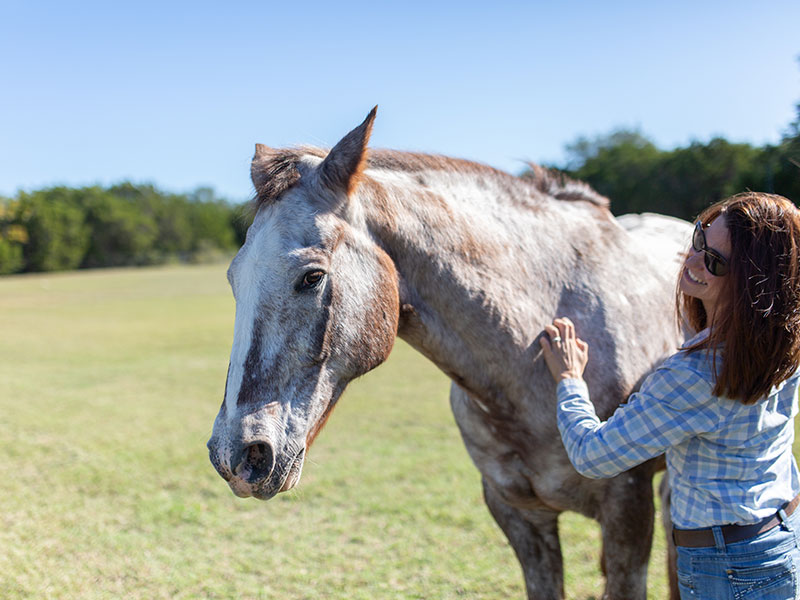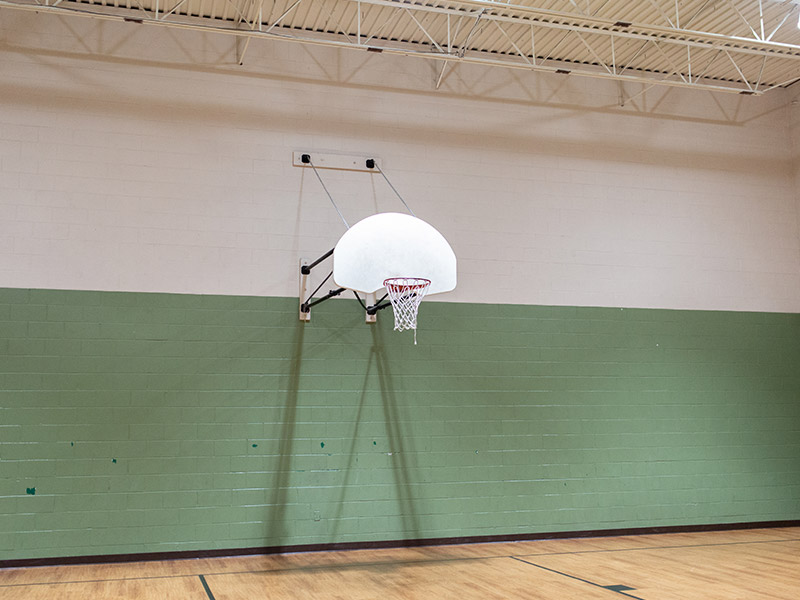Cedar Crest Hospital & Residential Treatment Center helps individuals who are struggling with suicidal ideations find long-term recovery. Located in Belton, TX, Cedar Crest is the leader in mental health care.
Understanding Suicidal Ideations
Learn about suicidal ideations
Suicidal thoughts, or suicidal ideation, are complex behaviors. Suicidal ideation may be the result of loss, anxiety disorders, depression, substance abuse, and problems in other areas of a person’s life that feel so overwhelming that dying by suicide seems like the only way to cope. Suicide is a long-term solution to a short-term problem, and remains one of the top ten causes for death in the United States. It’s been estimated that 11 people attempt suicide for every completed suicide, which makes suicide a major, preventable public health crisis.
In the moment, people who are feeling like harming themselves see no other option to end their deep emotional pain. This emotional pain can distort thinking so much so that it’s hard to consider that there may be other alternatives to coping with problems. It’s important that anyone who feels suicidal reach out for help – there are a number of organizations and people who want to support those individuals feeling as though dying by suicide is the only solution.
It’s vital to remember that most suicide attempts are a means of expressing deep distress, not a harmless plea for attention. Any person who appears to be suicidal should not be left alone for a moment – this is a medical emergency. Call 911 and remove all methods of suicide, including access to firearms and medications immediately.
Statistics
Suicidal ideation statistics
Suicide is a major and needless cause of death for many people living in the United States. In 2007, suicide was named the tenth leading cause of death in the US, accounting for nearly 35,000 lives lost. Suicide was the seventh leading cause for death in males, fifteenth for females, and a shocking third leading cause for death among people ages 15 to 24.
Causes and Risk Factors
Causes and risk factors for suicidal ideations
Suicidal thoughts and behaviors are quite complex and the causes for death by suicide are not thought to be the result of a single factor, rather the interplay of genetic, physical, and environmental risk factors. The most commonly cited causes for suicidal ideation and death by suicide include:
Genetic: People who are born into families in which a first-degree relative, such as a parent or sibling, attempted or completed suicide are at a higher risk for suicidal ideation. Additionally, those who have a family history of mental illness or substance abuse are at higher risk for suicidal behaviors.
Physical: Research indicates that the risk for suicide is associated with changes in the neurotransmitters in the brain, notably decreased levels of the neurotransmitter serotonin.
Environmental: Growing up or living in a home in which violence was present increases the risk for suicidal ideation. Additionally, exposure to suicidal behavior of friends, peers, and family can increase the risks for suicidal behaviors.
Risk Factors:
- Firearms in the home
- Past history of suicide attempts
- Impulse control disorders
- Childhood physical or sexual abuse
- Incarceration
- Being male
- Being between the ages of 15-24
- Teen pregnancy
- Sexually transmitted infections
- Conflicts between family members and loved ones
Signs and Symptoms
Signs and symptoms of suicidal ideations
One of the best ways to prevent death by suicide in children, teens, and adults is to understand the warning signs of suicide. Most people who do attempt suicide signal their intentions and intervention can stop the suicidal behaviors. All talk of suicide should always be taken very seriously – no matter the age.
Symptoms of suicidal ideation may include the following:
Behavioral Symptoms:
- Increased substance abuse
- Increasing amount of time spent alone
- Violent, rebellious, reckless behaviors
- Talking about having no reason to live
- Running away from home
- Saying goodbye to loved ones
- Talking about suicide
- Saying things like, “I’m going to kill myself,” “I wish I were dead”
- Decline in work or academic performance
- Withdrawing from once-pleasurable activities
- Sudden, extreme personality changes
- Seeking out lethal means to end their life
- Getting affairs in order – making a will, giving away treasured possessions
- Forming a plan for the suicide attempt
- Previous suicide attempts
Physical Symptoms:
- Insomnia
- Changes in eating patterns
- Weight loss or gain
- Vague somatic physical symptoms
- Neglecting personal appearance
- Worsening of physical health
- Psychomotor agitation
Cognitive Symptoms:
- Difficulty concentrating
- Problems with short-term memory
- Preoccupation with death, dying, or violence
Psychosocial Symptoms:
- Hopelessness
- Depression
- Depression followed by a period of intense happiness and relief
- Despair
- Paranoia
- Delusions
- Psychosis
- Hallucinations
- No hope for the future
- The belief that nothing will get better
- Anger
- Panic attacks
- Angst
- Extreme remorse
- Anxiety
- Anhedonia
- Sudden sense of calm
- Worsening of emotional health
Effects
Effects of suicidal ideations
Suicide attempts and behaviors can leave those closest to the person struggling to find answers. If you’re feeling hopeless about the future and believe suicide is the only way to end your pain, call 911 immediately.
Effects of suicide may include:
- Shame
- Guilt
- Anger
- Damage to vital organs
- Brain death
- Self-loathing
- Coma
- Seizures
- Death
Effects on Loved Ones
Effects of suicide on survivors
Those who are left to grieve the suicide of a loved one are called “suicide survivors.” Currently there are nearly 35,000 suicides annually in the United States – it’s estimated that for every suicide there are at least 6 suicide survivors. Approximately 5 million Americans have become suicide survivors over the past 30 years. Experiencing the loss of a loved one to suicide can be shocking, painful, unexpected, and can severely impact the entire grieving process.
Common effects suicide survivors experience include:
- Shame
- Feeling responsible for not preventing the suicide
- Feeling rejected or abandoned by their loved ones
- Fear
- Depression
- Relief (if loved one was suffering)
- Anger
- Numbness
- Profound sadness
- Emotional shock
- Grief (physical, mental, emotional, and spiritual)
- Denial
- Helplessness
- Guilt
- Self-blame
- Post-traumatic stress disorder
Co-Occurring Disorders
Suicidal ideations and co-occurring disorders
Many adults, children, and teens with suicidal thoughts are struggling with co-occurring mental health conditions. According to the United States Department of Health and Human Services, over 90% of people who die by suicide have a co-occurring mental illness.
The most common co-occurring disorders include:
- Depressive disorders
- Post-traumatic stress disorder (PTSD)
- Bipolar disorder
- Schizophrenia
- Borderline personality disorder
- Substance abuse disorders
- Alcoholism
- Paranoia
- Dysthymia
- Personality disorders
- Anxiety disorders

















